'It was really wrong': How Last Tango in Paris's infamous explicit scene undid its female star
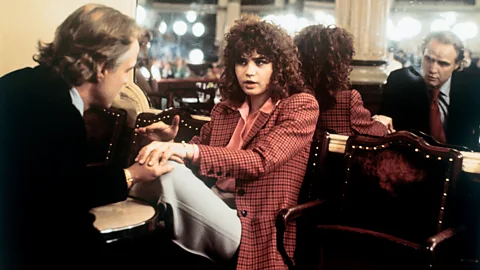 Getty Images
Getty ImagesBeing Maria, a new film starring Matt Dillon and Anamaria Vartolomei, explores the life of Maria Schneider and the making of one of the most notorious films in cinema history.
It may be the most infamous scene in the entire history of cinema. The sexually explicit drama Last Tango in Paris, made by Italian director Bernardo Bertolucci and released in 1972, is the story of an affair between a middle-aged man, Paul, and a young woman, Jeanne, in a Paris apartment. The notorious "butter scene" was not in the original script and elements of it were made without 19-year-old actress Maria Schneider's prior consent.
Warning: This article contains themes of sexual assault that some may find upsetting.
Schneider struggled with drug addiction and her mental health for years after the film's release, but her story, and the making of Last Tango in Paris, is now being told through the film Being Maria. It stars Matt Dillon as Marlon Brando, who played Paul, and Anamaria Vartolomei as Schneider. The film's French director Jessica Palud adapted the story from a 2018 memoir by journalist Vanessa Schneider, Maria's cousin.
"I think we have to look at the context of the time of Last Tango in Paris, it's now fifty years since the film was made," Matt Dillon tells the BBC. "That time was a different time, but it's very important to look at it now from a different perspective.
"It was really a traumatic experience for her. And not just at the time it happened, but as it continued to follow her and haunt her wherever she went in her life, in so many ways."
Being Maria explores Schneider's background: she was the product of an affair between a famous French actor, Daniel Gélin, and a Romanian model. She first met her father as a teenager, and he introduced her to film sets. Last Tango in Paris was her first leading role, and she would later recall in a 2007 interview, then in her fifties, that she was persuaded to take the part instead of starring in a film with French film star Alain Delon, and, at the age of 19, "didn't understand all of the film's sexual content". She "had a bad feeling about it all", she said, but was told by her agency she couldn't possibly turn down working with Marlon Brando, one of the greatest stars of 20th-Century cinema.
She remembered what happened on the day of filming that scene, in which her character is raped by Brando's, using butter as a lubricant. "That scene wasn't in the original script. The truth is it was Marlon who came up with the idea. They only told me about it before we had to film the scene and I was so angry… I felt humiliated and to be honest, I felt a little raped, both by Marlon and by Bertolucci. After the scene, Marlon didn't console me or apologise," she said. "Marlon said to me: 'Maria, don't worry, it's just a movie,' but during the scene, even though what Marlon was doing wasn't real, I was crying real tears.
"Thankfully, there was just one take."
Bertolucci would later talk about why he withheld details of the scene from Schneider, saying: "I wanted her reaction as a girl, not as an actress. I wanted her to react humiliated." He insisted that it was only the use of the butter that had surprised the actress, but Matt Dillon says what happened was "really wrong".
"It's something that we often do, actors, we won't tell the other actor, or the director will encourage us to not reveal what we're going to do, so we can get a real reaction," he says. "But it was really wrong, with a scene that was so sensitive, to do something like that."
Jessica Palud tells the BBC that recreating the rape scene "couldn't be avoided" in Being Maria, but this time, the audience sees events from Maria Schneider's perspective. "I couldn't avoid shooting this scene because it was the very moment in which her life completely switches. Everything goes wrong from there," Palud says. "It was important to have the scene from her point of view, in her body, in her gaze, what she went through, and the fact that there were witnesses. Maria was being assaulted in the presence of the whole crew, who were observing and not reacting."
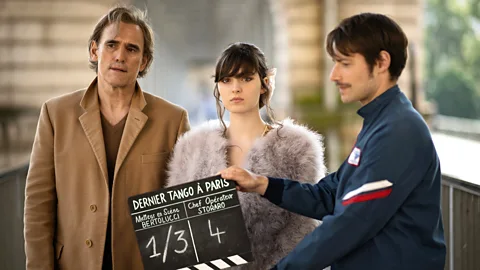 Kino Lorber
Kino LorberThis time the scene was prepared using an intimacy co-ordinator, which 61-year-old Dillon says was his first time working with one. "I said to the intimacy co-ordinator, 'do you know what the scene is about?'" he recalls. "They said yes, and I said, 'Because you can probably trace back the role of an intimacy co-ordinator to that moment, in that film.'"
The use of an intimacy co-ordinator, who acts as a choreographer and a liaison between actors and production during simulated sex and nude scenes, is increasingly standard in the industry since the #MeToo movement. It now makes headlines when they're declined, including by Mikey Madison in Oscar winner Anora, or when Gwyneth Paltrow revealed that she told one to "step a little bit back" during her sex scenes with Timothée Chalamet in Marty Supreme.
"I don't think it's a bad thing, I think it can evolve into being something good," Dillon says of using intimacy co-ordinators. "It seems they're there to prevent people from crossing boundaries, but in fact it's creating boundaries that give opportunities for different ways of approaching these scenes. I hope that's how it evolves rather than people feeling like 'they're here to tell us what we can and can't do.' And Anamaria and I were very comfortable."
Anamaria Vartolomei (who also made Golden Lion winner Happening, featuring scenes of illegal abortion) says that although she felt "safe, protected and guided" shooting the rape scene on the Being Maria shoot, she still became upset. "This scene was really violent," she tells the BBC. "I couldn't imagine what it was for Maria as she felt it for real. I'm just playing her. But this thing really happened to her, and she had no one around her. She just had people looking at her without doing anything. I think the violence of it was double because she didn't have the support I had on set, but I still felt it was really hard.
"I was so emotional that day. I couldn't stop crying because I feel I accumulated the violence of the scene when I saw it on screen. When I had to play it, all my tears came out. I think it's very brutal. And it's insane to think that somebody could do this."
Pressures of overnight fame
Maria Schneider was not only professionally unsupported on set, but she also lacked the experience to know that Bertolucci couldn't make her to do the scene. "I should have called my agent or had my lawyer come to the set because you can't force someone to do something that isn't in the script, but at the time, I didn't know that," she would say later.
But it was also the sensation the film Last Tango in Paris caused when it was shown from October 1972 that would undo Schneider. Despite (or helped by) it being banned or restricted in some countries; it made around $36m in the US alone. In France, it was reported audiences were queueing round the block for two hours or more to get a ticket.
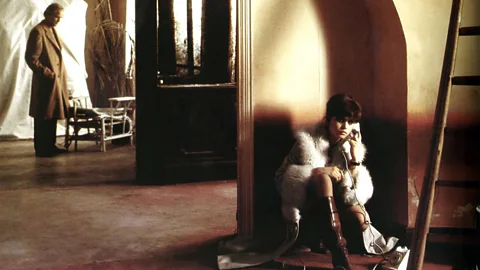 Alamy
AlamyThe disparity between Bertolucci, Brando and Schneider became clear: critical reaction to the film aided Bertolucci's reputation as an international auteur, and both he and Brando were nominated for Oscars for the film. Brando, now doubly legendary for making Francis Ford Coppola's The Godfather during the same period, is reported to have made around $3m out of Last Tango, as he took a share of the profits; Schneider recalled she was paid around $4,000. She appeared in full-frontal nudity; Brando never appeared naked in the film.
The young woman found the overnight fame increasingly hard to deal with. She told interviewers when the film came out that she had slept with 50 men and 20 women and "had tried heroin", because, she later explained, that although this was untrue, she was seen [as] "that sexy bimbo". Her erratic behaviour, she said, was down to being afraid. "To be suddenly famous all over the world was frightening," she said. "I didn't have bodyguards like they do today. People thought I was just like my character, and I would make up stories for the press, but that wasn't me… It made me go mad. I got into drugs… it was like an escape from reality. It was the 70s and at that time, it was all going on."
Her cousin, Vanessa Schneider, has said of her that she was also a victim of the double standards of the time: "For puritanical viewers, she was an easy woman who made pornography. It was brutal for her, especially since it wasn't at all in her nature – she was pretty modest, reserved and fairly conservative in certain respects."
"People thought I was like the girl in the movie, but that wasn't me," Maria Schneider declared in a 2007 interview. "I felt very sad because I was treated like a sex symbol, I wanted to be recognised as an actress, and the whole scandal and the aftermath of the film turned me a little crazy and I had a breakdown." Schneider also revealed that she tried to take her life during this period.
Later on, Schneider would get sober, but although she made around 50 films during her career (including the critically acclaimed 1975 film The Passenger, co-starring Jack Nicholson) she remarked that "Last Tango is still the one everyone asks me about." She died in 2011, from cancer.
"The unfortunate thing is Maria Schneider gave an incredible performance in that film, and you could see how her career could have taken a different path," Matt Dillon says. "But she already had so many strikes against her. Her family of origin was a very messy situation. She was abandoned by her parents and then abandoned by the people that she worked with. I think this abandonment followed her."
Protecting a younger generation
Schneider is not the only female actor of that era who suffered because of the hype around an erotic movie they starred in – Sylvia Kristel also found it hard to escape the sensation created by 1974's soft porn movie Emmanuelle, in which she had the leading role, and which also featured a rape scene. Nor was it only women who suffered making films with sexual content; Schneider would later say that "even Brando said he felt raped and manipulated" during the infamous Last Tango scene.
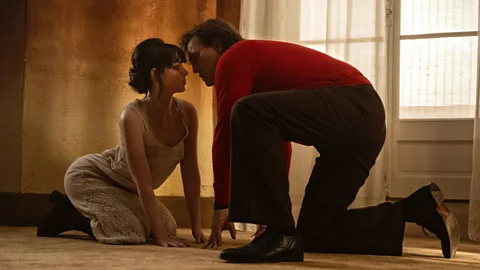 Kino Lorber
Kino Lorber"It was an era of celebrity directors," Anna Smith, host of the podcast Girls on Film, tells the BBC. "And the pattern seems to be mainly domineering male directors exploiting and bullying younger actresses. The entitlement of some of these lauded men enabled them to exert control over women."
"We had this idea of the creator, the director that has the supreme power," says Vartolomei, "and that they were a sort of guru of directing, and that all the people around him were listening to him as if he was God. I think that was the problem back then. Now we're more protected and our voice is heard, and it is also valued, which [it] wasn't back then."
More like this:
• How Snow White became 2025's most divisive film
But Being Maria director Jessica Palud points out that one of the more extraordinary aspects of Schneider's character was that long before the era of #MeToo, she was speaking out about what happened on the set of Last Tango in Paris. "The thing is that what I really found interesting and touching about her is that although it was in the 1970s and at the time, many young actresses would get assaulted or raped, but they kept it inside. Maria was extremely vocal and clear in interviews… she would speak up, but she wasn't listened to."
Schneider's experience on Last Tango was eventually taken seriously in 2016, when footage of Bertolucci's 2013 interview with Cinémathèque Française about the infamous scene and his desire for Schneider's humiliation to be real resurfaced. This time, it caused outrage. Some did not realise that the sex scene was, however traumatic, only simulated by Brando and Schneider. The then 76-year-old director called the furore "ridiculous" and reiterated that Schneider knew about the scene beforehand.
All three of the main storytellers of Last Tango in Paris – Bertolucci, Brando and Schneider – are now dead. Knowing that the horror, shock, upset and fury seen on Maria Schneider's face is real, and deliberately provoked, should the film, as French newspaper Le Monde pondered after the cancellation of a 2024 screening in Paris due to protests, carry some kind of warning?
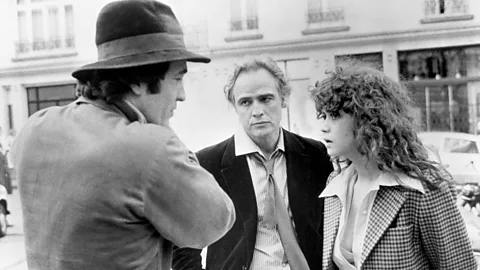 Getty Images
Getty Images"I have long thought that the perceived canon of cinematic greats needs re-examining – as it comes from an inherently patriarchal place," says Smith. "I think it's healthy to revisit classics from a modern perspective; I hope our understanding of the damage that can be caused by certain attitudes and practices has evolved."
Being Maria, Palud says, attempts to show that, but she says that "I did not want to judge nor condemn, but to show the system and show what needs to change in the system for this younger generation to be protected. There's still a lot to do. But a scene like this wouldn't happen now, thank God."
Vartolomei adds: "I feel this movie is clearing things up for Maria, along with Vanessa Schneider's book. Back then, Maria was considered a victim, but for me she's far from that, as she found the strength to talk, for the story to be heard, even if she decided to talk in a society that wasn't ready to receive her voice. But now I'm just happy that we are finally able to hear her."
Being Maria has a US-wide release from 4 April.
--
If you liked this story, sign up for The Essential List newsletter – a handpicked selection of features, videos and can't-miss news, delivered to your inbox twice a week.
